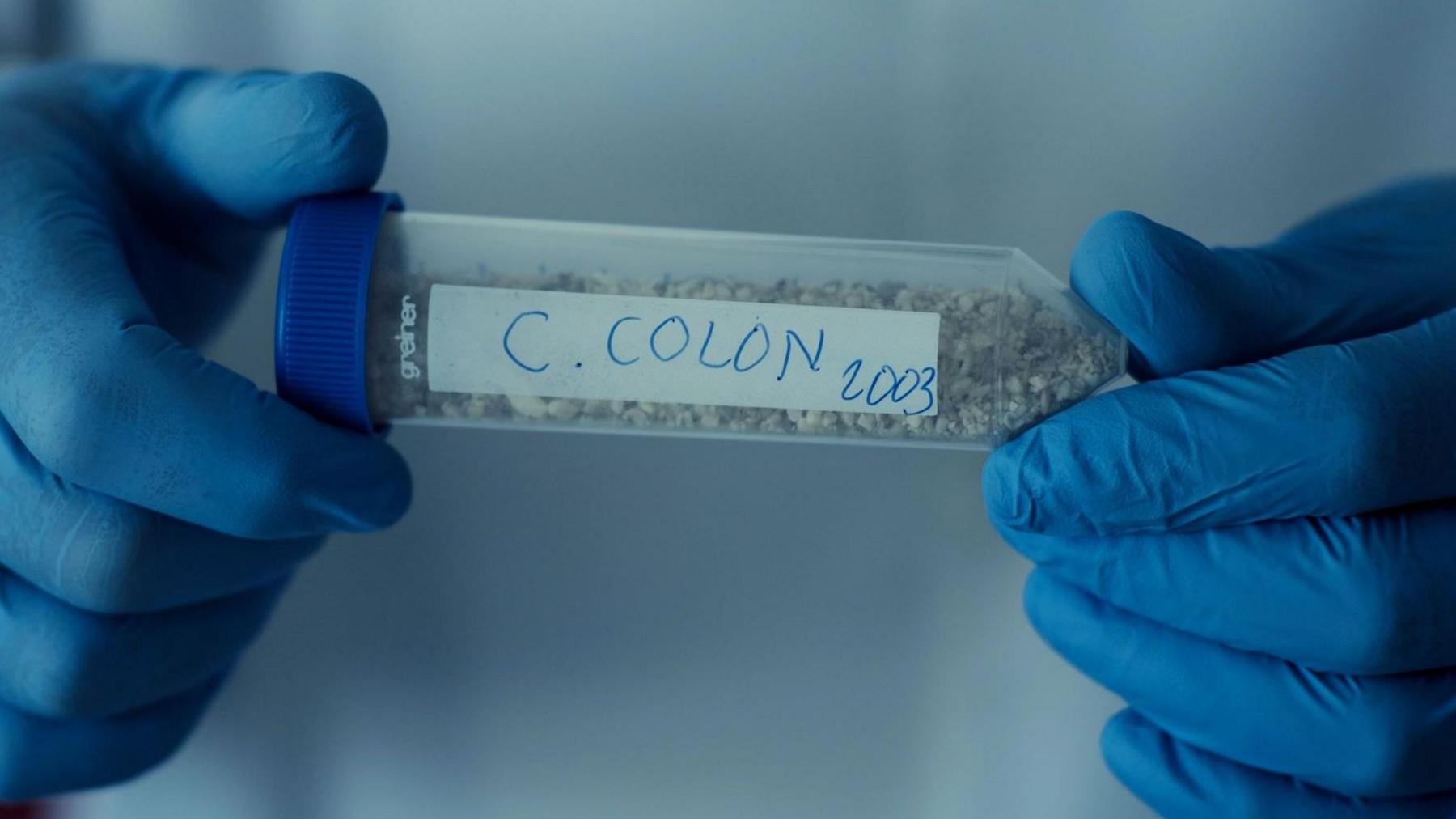Christopher Columbus's DNA to shed light on his origins

DNA samples were taken in 2003 from the bones of Columbus - known in Spanish as Cristóbal Colón - and his son Hernando
- Published
More than five centuries after he re-shaped history by opening up the New World to European exploration, scientists say they are ready to reveal the truth about the origins of Christopher Columbus.
The explorer reached the Americas in 1492 with the support of the Spanish Crown.
But although mainstream history books describe him as a native of Genoa, uncertainty has surrounded his provenance and many countries and regions have claimed him as their own.
Now, after more than two decades of research, scientists say they have enough evidence to solve the argument over the birthplace of Columbus.
In 2003, José Antonio Lorente, professor of forensic medicine at Granada University, and the historian Marcial Castro, exhumed what were believed to the remains of Columbus from Seville cathedral to take DNA samples. They also took DNA from the bones of his son, Hernando, and brother, Diego.
Since then they have compared the DNA with that of historical figures from different countries and regions in order to solve the mystery, using technological advances to ensure the veracity of the results.
Columbus and his expedition made landfall in 1492
The answer is expected to be revealed in a documentary film due to be shown by Spain’s national broadcaster RTVE on Saturday, which is a national holiday marking Columbus’s arrival in the Americas.
Ahead of the broadcast of the film, billed as “a documentary thriller”, the forensic team has revealed one result of its research: that the remains exhumed from Seville were indeed those of the explorer.
The Dominican Republic has long claimed that it is host to his body and a mausoleum is dedicated to him in the city of Santo Domingo.
In presenting this finding, Prof Lorente said that “we have been able to prove beyond all doubt, with new technology, the previously unconfirmed theory that the remains in Seville are those of Christopher Columbus”.
However, the team has said it is possible that some remains of the explorer are in the Dominican Republic, which did not co-operate with the project.
But Columbus’s birthplace is the biggest enigma.
Researchers say they have definitively confirmed that the bones buried in Seville's cathedral belong to Christopher Columbus
The widely accepted theory is that he was born in Genoa, in 1451, to a family of wool weavers.
In 1492, he led an expedition backed by Spain’s Catholic Monarchs seeking to establish a new route to the Far East.
Instead, he reached the Caribbean, marking the beginning of a period of European contact with the Americas which would lead to conquest and settlement - and the deaths of many millions of indigenous people due to diseases and war.
It is widely accepted that Columbus died in 1506 in the northern Spanish city of Valladolid.
There have been an estimated 25 or so separate claims regarding where he was born, including from Poland, Scotland, Hungary and Scandinavia.
However, Prof Lorente’s team whittled the candidates down to eight possible birthplaces, in Spain, Portugal and Italy. The process has involved comparing Columbus’s DNA with that of individuals believed to be his relatives in these locations.
- Published7 August 2016
- Published12 October 2015
The north-western Spanish region of Galicia is on the shortlist. So too is the Balearic island of Mallorca, with the theory that Columbus was the illegitimate son of the prince of Viana, brother of King Ferdinand, who endorsed his breakthrough voyage.
Another hypothesis proposes that Columbus was a Jew from the Mediterranean port city of Valencia. His obscure early life, according to this theory, can be explained by the fact that he sought to hide his Jewish background to avoid persecution by the fervently Catholic Spanish monarchs.
Elsewhere in Spain, there are also claims by the regions of Navarre and Castilla La Mancha to Columbus’s provenance. In Portugal, one theory states that the explorer was a nobleman-pirate whose real name was Pedro de Ataíde.
RTVE has provided tantalising clues ahead of the broadcast, including that the results “will revolutionise everything we have studied” about Columbus. However, Marcial Castro, who was involved in the project, said in a teaser film that he saw the “traditional Genovese theory” as the most obvious one to back as a historian.
In a statement, Prof Lorente said that his team wass “still analysing very important recent data” which would not affect the content of the documentary but would have scientific significance and would be presented in November along with the full results of his team’s research.
The programme Colón ADN. Su verdadero origen (Columbus’s DNA: His true origins) goes out on Spain’s TVE 1 on Saturday at 22:30 (20:30GMT).